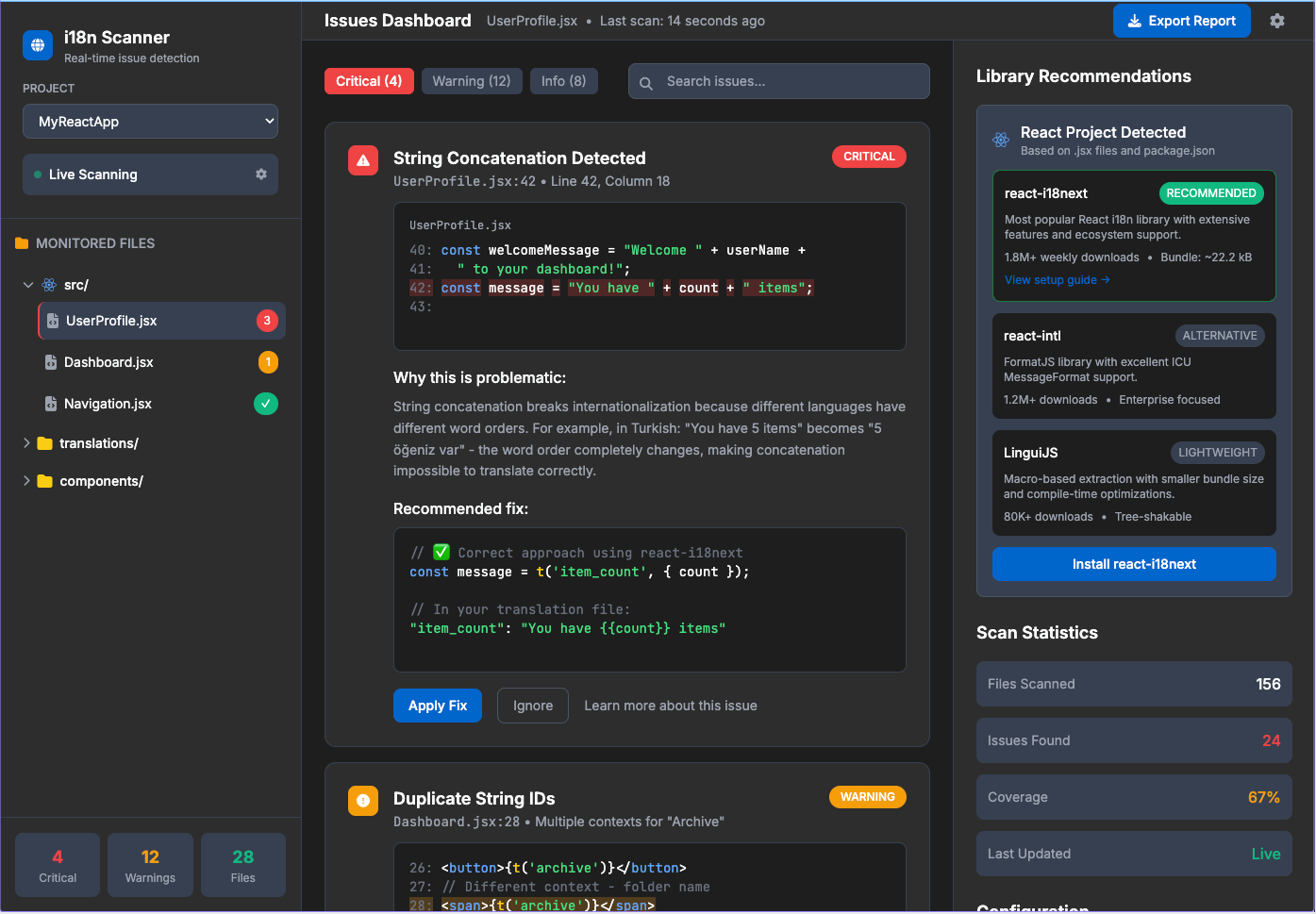The AI Ready Localizer #8: How to Use AI to Prevent i18n Bugs
A Practical Guide to Context Engineering
In this edition of The AI-Ready Localizer, I want to get hands-on with how AI can help prevent internationalization (i18n) issues before they hit production.
If you caught my last post, I shared real examples of the most common pitfalls — from hardcoded strings to concatenation disasters.
But here’s my question:
Beyond manual source reviews and looping back with dev teams, can we build an AI-powered scanner that automatically flags potential i18n issues in string files and suggests fixes?
Let’s explore that.
Sneak peek of the i18n scanner I’ve been building — catching global bugs before they ship.
An AI-Powered i18n Scanner
I’m building a tool (I started building it in Lovable and I’m now experimenting with it in Replit as well) that:
Stays in sync with source string files
Continuously analyzes them for potential i18n risks
Generates developer-friendly reports explaining the issues, causes, and fixes
Offers recommendations tailored to each stack and file format
It detects:
Hardcoded plurals and gendered logic
String concatenation patterns
Positional vs. named formatting (e.g.,
%svs{name})Directionality assumptions (e.g., LTR-only layouts)
Variables that break grammatical agreement
Embedded business logic inside translatable strings
It outputs:
Annotations of risky strings
Explanation of the issue
Recommended refactor patterns
Suggested i18n libraries/tools per stack
But none of this works without the right context.
Keep reading with a 7-day free trial
Subscribe to The AI-Ready Localizer to keep reading this post and get 7 days of free access to the full post archives.


